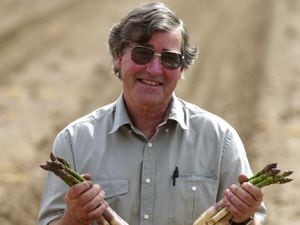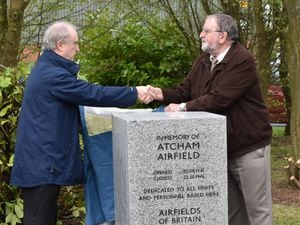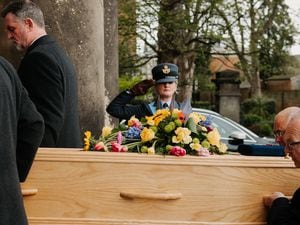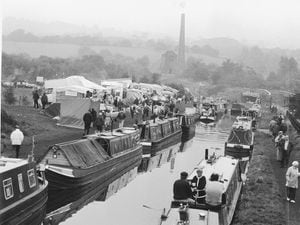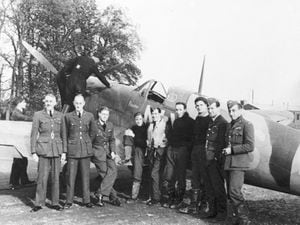Mystery schoolboy centre stage in rare pictures of Shropshire at war
Me with a twisted machine gun. Me at the site of a crashed German bomber on Clee Hill. Me looking in the cockpit of a Messerschmitt 109 fighter in a Bridgnorth car park.
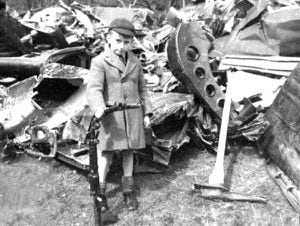
They didn't call them selfies back in those wartime days, but one Shropshire schoolboy was amassing a remarkable collection of snaps featuring himself centre stage with some of the weaponry of the Nazi war machine which had fetched up in the county.
And now, thanks to Shrewsbury aviation historian Michael Davies, we can publish some of those fascinating pictures for perhaps the first time ever, shedding light on the dark and dramatic days of 1940 and 1941 during which Shropshire found itself feeling the impact of the raging Blitz.
"They are amazing pictures," said Michael.
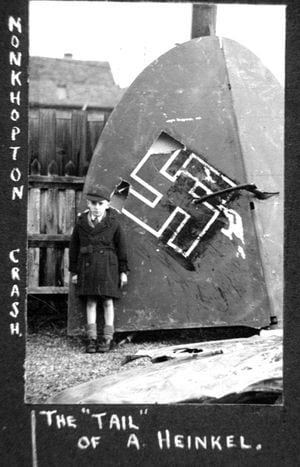
"I think they were taken by a local doctor, and they are extraordinary, really. Back then they did not have film and weren't allowed to take pictures, particularly of crashed German aeroplanes.
"If he was a doctor it would make sense, as he had the money and the fuel to run a car, because that was impossible in those days, and he had access to anywhere he wanted to go, and took his child with him. In one photo the child is holding a bent machine gun"
Unfortunately the identity of the photographer and the little boy in his school cap who features in almost all the photos is not known, but as some of the pictures can be pinpointed to Bridgnorth and Clee Hill, it seems likely they were from that area.
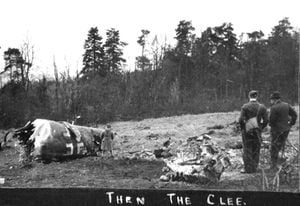
And whoever it was was able to get to the sites in the first place, and had the authority, standing, or plain nerve to take pictures openly and without apparent fear of challenge by the military.
There are some tantalising clues to help identify them. In one of the snaps, taken at a family dinner on Christmas Day in 1944, one of the group is wearing a dog collar, so perhaps the lad's granddad was a local vicar.
Another dated December 31, 1944, is captioned in the album "Cousin Frank, R.A.A.F. of Australia." Michael has a note that this cousin from the Royal Australian Air Force was Frank Moran.
A number of the pictures show the wreckage of a crashed German Junkers Ju88 bomber on the Clee Hill. One photo is captioned "Hit the tree" and another, "Then the Clee" - a description of how the German crew met death and disaster.
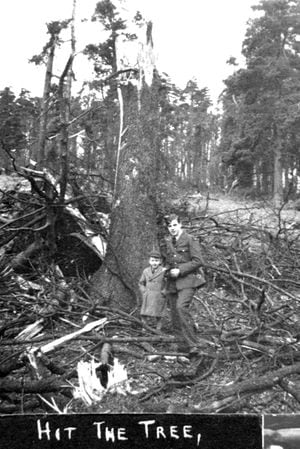
From the evidence of the images, security was hardly tight, with various civilians including youngsters, and even a dog, milling around.
This must have been the crash of a Ju88 on a bombing raid on Birmingham near the Wicket on Brown Clee Hill on April 1, 1941, while flying in low cloud, killing all four crew.
According to Pancake & Prangs, a book about Shropshire's military air crashes by historian Tom Thorne, the aircraft cut a swathe through the trees and then exploded on impact.
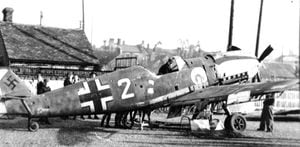
Other pictures were taken on November 27, 1940, and can be pinpointed by a contemporary report in the Bridgnorth Journal to the car park of the Majestic cinema, Bridgnorth, when the Messerschmitt 109 fighter, and the tail fin of a Heinkel III bomber which had come down at Monkhopton only 11 days earlier, were put on display for a week to raise money for the Bridgnorth District Spitfire Fund.
Over 4,000 people were estimated to have gone along, raising £122 12s. 3d for the fund. The amount included gate money, and people also paid to sit in the cockpit of the German fighter.
On the Saturday, November 30, an RAF fighter pilot, a Flight Lieutenant Modley, addressed a gathering in the car park and also described points about the Messerschmitt.
The fighter, incidentally, will not have crashed in Shropshire - it did not have the combat radius to reach the county.

The newspaper reports do not describe how the German fighter was captured in the first place, but the photos show what may be bullet holes, and some evidence that it had force-landed. Before being brought to Bridgnorth - it arrived on the evening of Monday, November 25 - it had been on show in Hereford.
Michael is now ruing the fact that when he was asked to copy the mystery family's photo album by Major Geoffrey Parfitt, the man behind setting up Shropshire Regimental Museum at Shrewsbury Castle, he did not ask more questions or make better notes - but then he could not have known, for tragic reasons, that he had not as much time as he thought.
"I was doing some work for the museum for Major Parfitt. He said he had some old pictures he wanted copying, potentially for a booklet.
"I saw these extraordinary photographs and thought I had to copy them for posterity. But then Major Parfitt became ill after that, the project was never finished, and he passed away. Obviously I didn't expect that.
"I was interested in the pictures of the aircraft, but there were lots more, a whole album of fascinating pictures taken in Shropshire during the war, showing people building air raid shelters, and family life - I remember pictures of them going to bed with tin hats on. They were superb quality."
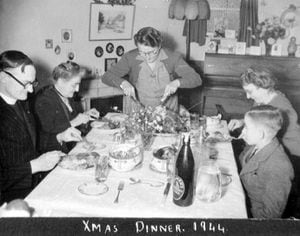
He thinks the photo album was donated to the regimental museum, and seems to recall that it was Major Parfitt who told him they came from a local doctor.
"I'm sure they were kept in the museum and he brought them out one day. I was doing lots of copies and negatives for him.
"It was all after the IRA attack on the museum. I was photographing the remains of the things for police and forensics. I photographed every exhibit they had about a month before the bombing - how about that for timing?"
Michael knows he was at art college at the time and thinks he copied the pictures in 1994, although perhaps it was slightly earlier, as Major Parfitt retired as the museum's curator in 1993, having worked tirelessly to help the museum recover after the IRA firebombing attack in 1992.
Major Parfitt died in 1996, and his widow died quite recently.
Missing
The big question is a simple one - where are those historic pictures now?
Sadly, for the moment at least, this rare photo album depicting Shropshire at war has to be classed as "missing."
Peter Duckers became curator of Shropshire Regimental Museum in 1996, not long after Michael copied the pictures, and has just returned this month as acting curator.
He said: "I have no memory of any such photographs in our collection - and why would there be?
"I was there nearly 20 years and got to know the collection backwards. I don't recall anything in the collection catalogue now that would fit the bill.
"I have never seen photographs like that in the regimental museum nor in our collection in Shropshire Archives.
"It isn't beyond the bounds of possibility that they were Geoffrey Parfitt's, as he had a huge collection, or that he knew somebody who had them.
"His entire collection was auctioned off shortly after his death."

